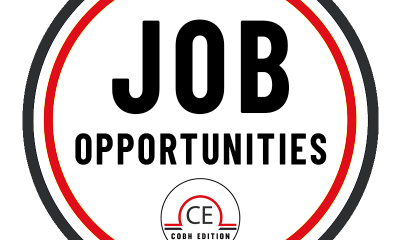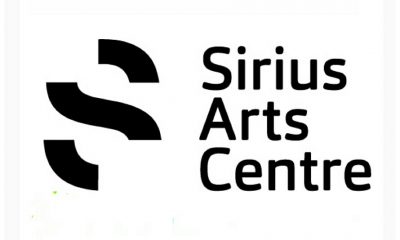Featured
Competitive & Recreational Rowing Are Unique
- Share
- Tweet /home/eastcork/public_html/wdir/wp-content/plugins/mvp-social-buttons/mvp-social-buttons.php on line 68
https://www.cobhedition.com/wdir/wp-content/uploads/2010/05/mobrien1.jpg&description=Competitive & Recreational Rowing Are Unique', 'pinterestShare', 'width=750,height=350'); return false;" title="Pin This Post">
 With the All Ireland Coastal Rowing championships taking place on our doorstep next weekend I decided to base one of my articles this month on a sport very close to my own heart. There is nothing better than rowing on a summers evening or the thrill you get from competing on a big race day.
With the All Ireland Coastal Rowing championships taking place on our doorstep next weekend I decided to base one of my articles this month on a sport very close to my own heart. There is nothing better than rowing on a summers evening or the thrill you get from competing on a big race day.
Both competitive and recreational rowing are unique in comparison to most sports in that they exercise all of your major muscle groups. Everything from your legs, back, and arms are engaged while rowing. In addition, rowing is a low-impact sport. When executed properly, the rowing stroke is a fairly safe motion, providing little room for the serious injury often found in contact and high-impact sports.
The motion of each stroke is made up of four parts that flow into one another. These are the catch, the drive, the finish, and the recovery. The following is a description of the bio-mechanics of rowing.
The catch is the start of each stroke and it is the moment when you place your oar into water. The legs, hips and shoulders in use during the catch involve the following muscle groups: quadriceps, gastrocenius, soleus, gluteus maximus, and biceps brachii.
The drive
As you begin to push with your legs, you are entering the drive of the stroke. During the drive your l egs, back and arms are working with the trapezlus, posterio deltoid, quadriceps, pectorals major and biceps brachii muscle groups.
The pull
Once the legs are fully extended, you begin to pull the oar in with your arms and swing your shoulders backward, bringing yourself to the finish position. You have just utilized the rest of the entire body’s muscle groups as follows: g luteus maximus, quadriceps, brachioradialis, and abdominal.
The recovery
The entire process is repeated, each movement flowing into the next, forming another stroke.
Achieve fitness goals faster A University of Stockholm study has confirmed the added benefits of recreational activities when performed in an outdoor setting. Many of us already suspected that we exercise harder with outdoor exercise without feeling as tired or even like we have worked hard. We also know that the higher the exercise intensity, the sooner fitness goals can be reached. Achieving fitness goals more quickly with the improvements that are gained such as weight loss, reduced stress levels, shaping and toning are the rewards that help us stick with our workout program and continue to see improvements.
Rowing is also a time-efficient work out and a low impact sport enjoyed by all ages.
Reduce the health effects of stress and increased cortisol
Stress causes chemical changes in the body such as increased cortisol levels that, left unchecked, can have negative effects on both mental and physical health. High levels of stress contribute to health issues as diverse as depression, insomnia, heart disease, skin disorders and headaches. Interestingly enough, stress has been the subject of more than 20,000 scientific studies.
One 10-year study by Kiecolt-Glaser looked at the effects of stress on health of medical students. The research revealed decreased levels of the body’s natural killer cells, which fight infections and tumors, during even the familiar stress periods of exams. Whether you are studying for a test or just trying to cover extra bills, stress can have a negative effect on health.
Another study from “Circulation: Journal of the American Heart Association” showed that mental stress can actually reduce blood flow to the heart. Combined with bad cholesterol and smoking the risk factor of stress on coronary heart disease patients was notable.
-

 Announcements2 weeks ago
Announcements2 weeks agoJOB OPPORTUNITIES Watersedge Hotel are currently hiring for the following positions
-

 Local News3 weeks ago
Local News3 weeks agoLandmark Partnership: Cruise Ireland and Cruise Britain Join Forces to Boost Cruise Tourism
-

 Local News2 weeks ago
Local News2 weeks agoSpike Island’s After Dark Tours return: Explore the haunting history of iconic prison island once dubbed “Ireland’s Hell”
-

 Events & Entertainment2 weeks ago
Events & Entertainment2 weeks agoSarah Browne Exhibition at the Sirius Arts Centre
-

 Local News4 days ago
Local News4 days agoCrosshaven RNLI Assist Two on Disabled Yacht
-

 Local News4 days ago
Local News4 days agoCyclists of all abilities encouraged to join Fort2Fort Charity Cycle 2024Saturday, 8th June
-

 Announcements4 days ago
Announcements4 days agoCobh Youth & Social Projects CLG have the following vacancies
-

 Events & Entertainment4 days ago
Events & Entertainment4 days agoSIRIUS ARTS CENTRE: COMMISSION: Aikaterini Gegisian
-

 Sport3 days ago
Sport3 days agoJohn O’Shea extended as Interim Head Coach for June window
-

 Local Soccer2 weeks ago
Local Soccer2 weeks agoCobh Wanderers face College Corinthians in 1st Round of Sports Direct Men’s FAI Cup







